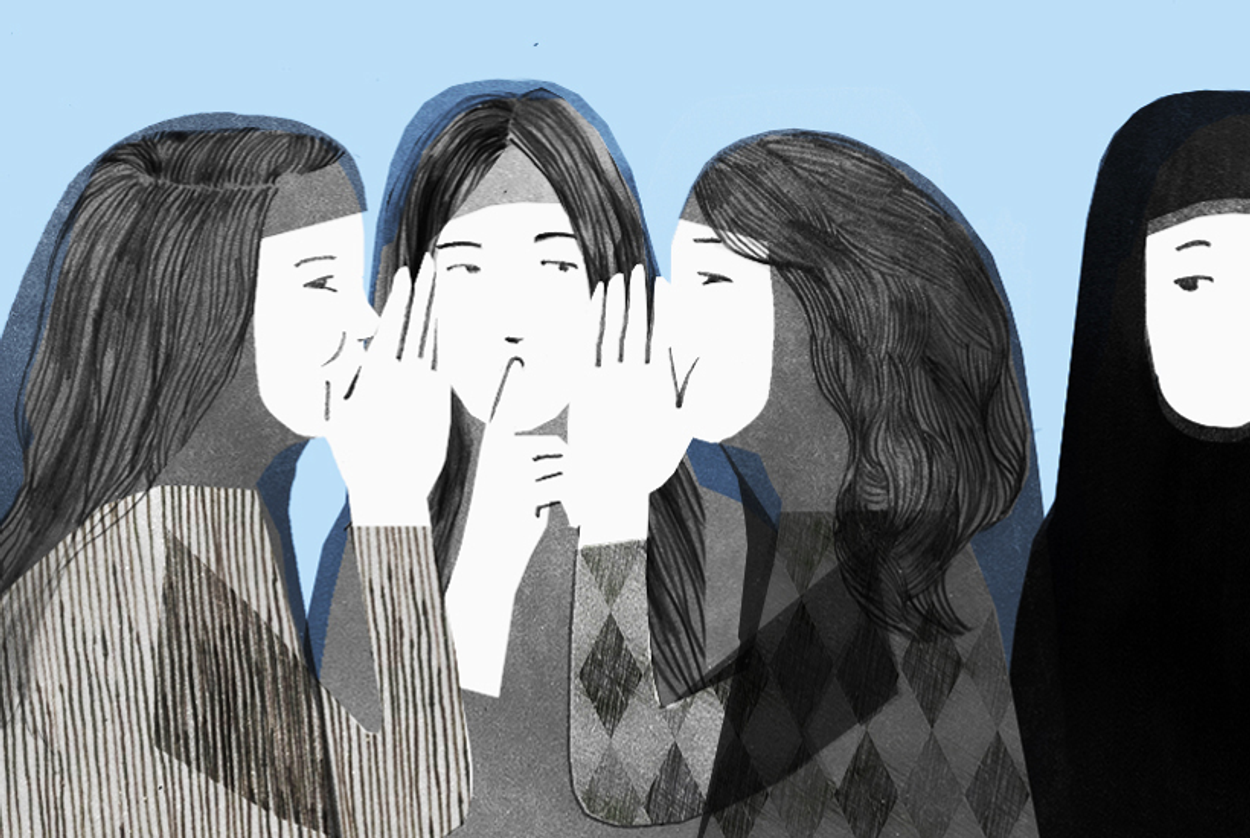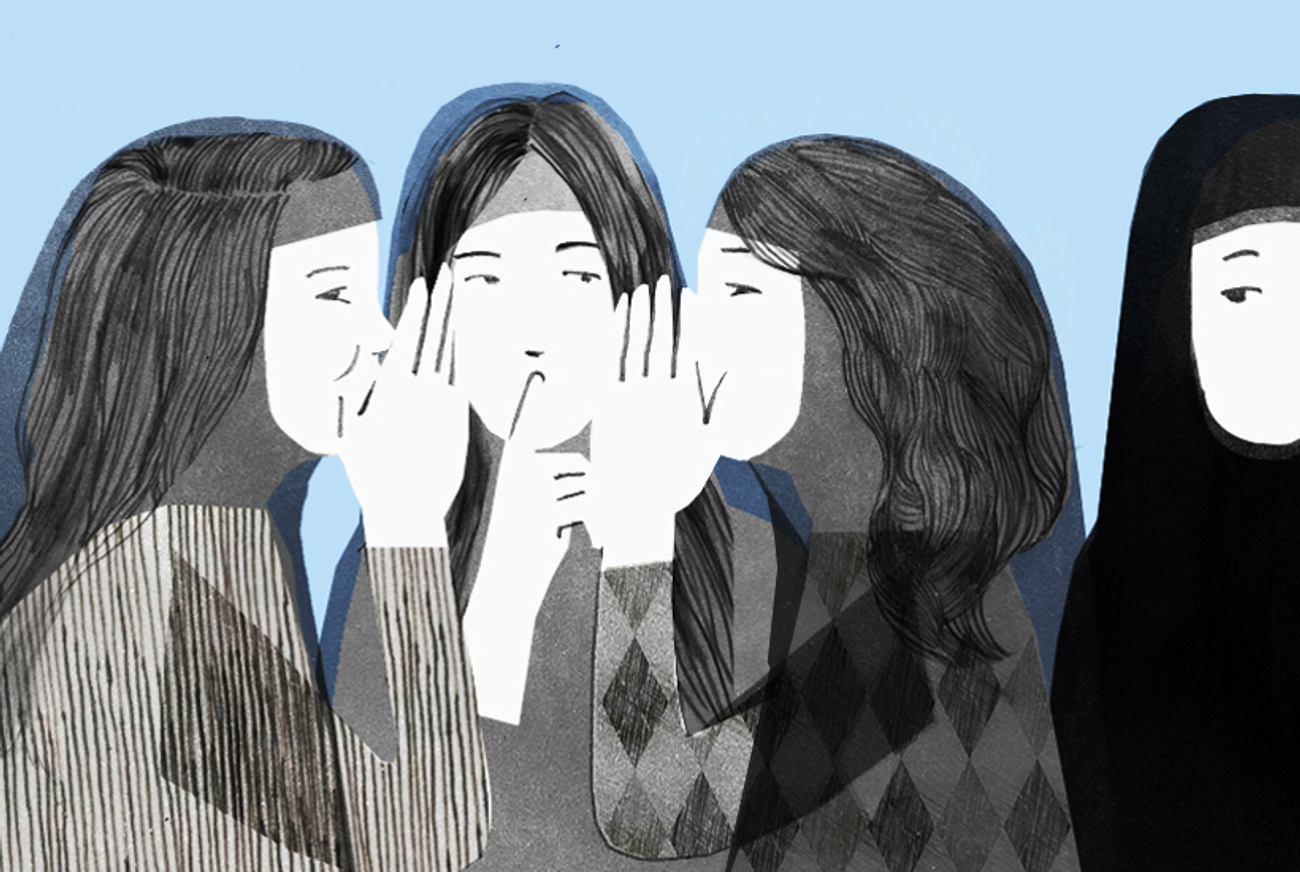For One Outspoken Teenager in Revolution-Era Iran, Queen Esther Was a Kindred Spirit
Amid political upheaval, an embattled girl fled entirely alone—the lessons of Purim’s heroine propelling her to freedom




When I escaped from Iran in 1982 at the age of 17, I took a heart-wrenching journey into the unknown, crossing the dangerous Kavira Loot Desert in the company of smugglers. I was one of the first in my family to leave the country. I took nothing with me except my belief in freedom, a sense of my own identity, and my love for home and family.
Today, as we count down the days to Purim, I remember my life in Iran, and I feel my heart grow full. For most Jews, Purim and the story of Queen Esther provide the community with an opportunity to celebrate Jewish survival. For me, Purim and Esther bring me back to my hometown of Shiraz and the steps I, like Esther, took to stay true to myself.
In the Iran of my youth, we celebrated the holiday in a simpler style. Esther’s story was read in the large synagogue where we met to pray, to mourn, to celebrate, and to learn. The Megillah was chanted in a straightforward manner, without the hijinks enjoyed in Western recitations. No noisemakers drowned out the name of evil Haman, and no special pastries were prepared, although my grandmother did make her “happy halvah,” a treat she offered only on happy occasions. We looked forward to Purim largely because it sounded an alarm: just 40 days to clean and get ready for Passover.
I loved Shiraz with its many gardens full of fragrant roses and its lively markets. My stalwart mother expected her daughters to be independent, reflective, and practical. From a young age, I was entrusted with the grocery shopping, and I was expected to return with the freshest produce purchased at the best price. The food markets were crowded, but I was never intimidated. I knew the people, the routes, and the ways to behave. Even as a young girl, I knew my mission and how to do it well. This confidence was part of me, and it eventually led me into trouble.
Though many freedoms were curtailed under the shah, we were allowed to choose our style of dress. Some women wore the short skirts, high heels, and makeup popular in the mid-‘70s, while others preferred a light, pale, conservative hijab. My mother was comfortable in either attire. When she went to the markets, where many conservative Iranians were found, she wore her hijab. To go to work, she put on Western clothing and red lipstick.
In most respects, though, the shah remained an old-style dictator, controlling access to information and banning basic freedoms. Classical music was permitted, but most modern thinkers were forbidden. As a young teenager, I was incensed that I could choose my make-up but not the books I read. In 1978, I was 13 and decided that was old enough to lend my voice to anti-shah demonstrations. I slipped out of the house and joined university students, crying out, “Long live freedom!”
When my parents learned of my exploits, they were furious but could not deter me from adding my voice to the cause of freedom. I needed it to survive and was ready to face whatever might befall me. How naive I was, believing I could change the world.
Feb. 11, 1979, marked the shah’s fall and the start of Islamic rule. Life became progressively unbearable as personal liberties, once taken for granted, were systematically removed. Now even my choice of dress was decided by the state. I felt like I was slowly suffocating. I felt betrayed; my efforts had helped remove the shah and had inadvertently supported the ayatollah. I had “climbed out of a pothole and had fallen into a gigantic well,” as the Persian expression goes.
I wanted to continue hiking with my friends in the mountains surrounding my home as we had before the revolution, but such activity was now forbidden. I wanted to choose my own friends, but boys and girls were not permitted to walk together unsupervised. I wanted to study Freud and Einstein and Gandhi, but the ayatollah had outlawed their work. Even my access to music was decided for me: Both the Beatles and Bach were now banned.
I lived in fury. I felt like a bird with pinioned wings. It was my nature to speak my mind; despite the greater restrictions, I still had to voice my discontent.
I attended a private school for girls of all religions. I had several close friends, among them, members of the Baha’i and Muslim faiths. In 1978, the homes of the Baha’i were set ablaze by followers of the ayatollah, even before he came to power; I was devastated by the cruelty. Up until this point, we students had been friendly and socialized outside of school. Well-raised children, we never mentioned religion or politics, and we had been typical in this regard. Now things were changing.
In the playground, I overheard heard some classmates say that the attacks on the Baha’i neighborhood were justified and that our Baha’i classmate should have faced the same fate. Words jumped out of my mouth. “But the name ‘Mohammed’ stands for ‘tolerance’ and ‘peace.’ How is burning a home showing either of these?” Without realizing it, I had shamed my peers. How could a dirty Jew reference the name of the prophet and criticize Muslim behavior?
One Muslim peer held a grudge against me for my defense. My words were the beginning of the end of my life in Shiraz.
That classmate reported me to the authorities, and my mother soon learned that I was in danger of being arrested. Things got worse in Shiraz, and by the end of 1981 my mother decided that I had to leave my home and my school and go into hiding. I spent a year wandering from city to city and from refuge to refuge, growing increasingly estranged from myself. When my mother realized how my spirit was withering, she told me that I had to leave Iran.
I was 17 years old when I crossed the desert; six years would pass before I saw my mother again, and an additional 15 before I would see my father, but never again would my immediate family be all together.
During my flight from Iran, as well as in subsequent years, I often thought of a visit our family took to the city of Hamadan, and the tomb of Esther and Mordechai, in 1980, a few months before my life was torn apart. We boarded a bus for the long, strenuous pilgrimage that Iranian Jews often made to the tomb. On the way, I thought about the kinship I’ve always felt with Esther, the Jewish girl who, at the prompting of her cousin Mordechai, went to live among strangers in the royal court of Ahasuerus and eventually saved the Jews from a deadly conspiracy plotted by Haman, the king’s evil adviser. I had always wondered if she had ever felt like I did–that her very nature would lead her to her destiny.
When we arrived in Hamadan, I was surprised at the dilapidated state of the tomb. Hundreds of years after the graves had been dug, they had been covered with a dome made of bricks, now pock-marked by time. The stairs to the low entrance were decayed and broken. It was clear to me that the site of Esther and Mordechai had been largely forgotten or dismissed by most Iranians.
I was a strong-willed, intelligent girl in a world where silence and obedience were required of women. My mouth had no filter, and my mind was quick. I did not fit in. I looked at the lonely mausoleum and despite the years that separated us, I felt a bond with Esther, who had made her own brave choices and had stayed true to her values. I did not know then that within a short space of time, I, too, would leave my people. I would not be a heroine, but I would be strong, and my exile would eventually motivate the escape of many family members.
When my mother told me that I must leave Shiraz if I were ever to create a life for myself, she said that if a person has nothing to die for, then she has nothing to live for, either. Afraid, I thought of Queen Esther. I pictured her as a girl little older than myself, dark-haired, dark-eyed, with the arching eyebrows of a Persian woman. Esther had chosen for herself, and I knew that I had to do the same.
I left my home and the city of my ancestors so that I could become the person I needed to be. I endured a terrifying journey to Pakistan, where I lived for months without money, connections, or possibilities. I consoled myself by remembering Esther, who had freely chosen to separate herself from her community. Esther had saved her people, and I would save myself. My flight eventually led me to Montreal, where, with the support of the government and the Jewish community, I learned two languages, found a job, returned to school, and became a chiropractor. I married a Jewish man, and we have two children.
Here in Montreal, Purim is celebrated with gaiety, noisemakers, drunkenness, shpiels, and Hamantashen. It’s a time when I am acutely aware of my connection to Queen Esther. In my mind’s eye I see her curly hair and her striking eyes. I see myself extend my arms to embrace her, sister to sister: queen, friend, and mentor.
Sima Goel is the author ofFleeing the Hijab: A Jewish Woman’s Escape from Iran.